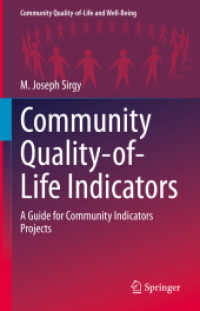Full Description
This book presents the intersection of two dynamic fields: Reinforcement Learning (RL) and RIS- Assisted Wireless Communications. With an emphasis on both discrete and continuous problems, it introduces a comprehensive overview of RL techniques and their applications in the evolving world of RIS-assisted wireless communications. Chapter 1 introduces the fundamentals of RL and deep RL (DRL), providing a solid foundation for understanding subsequent chapters. It also presents the Q-learning, deep Q-learning, and deep deterministic policy gradient algorithms. Chapter 2 provides a holistic overview of RIS-assisted systems and details several use cases in wireless communications. Then, Chapters 3 and 4 present various applications of the discrete and continuous DRL to RIS-assisted wireless communications. From maximizing the sum-rate to minimizing, the system resources and maximizing the energy efficiency. These chapters showcase the versatility of the DRL algorithms in tackling arange of challenges. This book concludes with Chapter 5, which introduces the challenges and future directions in this field. It explores the particulars of hyperparameter tuning, problem design, and complexity analysis, while also highlighting the potential of hybrid DRL, multi-agent DRL, and transfer learning techniques for advancing wireless communication systems.
Optimizing RIS-Assisted Wireless Systems requires powerful algorithms to cope with the dynamic propagation environment. DRL is envisioned as one of the key enabling techniques to exploit the full potential of RIS-Assisted Wireless Communication Systems. It empowers these systems to intelligently adapt to dynamic wireless environments, maximize performance metrics, and adjusts their configurations to accommodate diverse use cases efficiently.
This book serves as a valuable resource, shedding light on the potential of DRL to optimize RIS-Assisted Wireless Communication, enabling researchers, engineers, advanced level students in computer science and electrical engineering and enthusiasts to grasp the intricacies of this topic. It offers a comprehensive understanding of the principles, applications, and challenges, making it a reference to recognize the full potential of the RIS technology in modern wireless communication systems.
Contents
Preface.- Chapter. 1. Reinforcement Learning Background.- Chapter. 2. RIS-AssistedWireless Systems.- Chapter. 3. Applications of RL for Continuous Problems in RIS-Assisted Communication Systems.- Chapter. 4. Applications of RL for Discrete Problems in RIS-Assisted Communication Systems.- Chapter. 5. Challenges and Future Work.-








